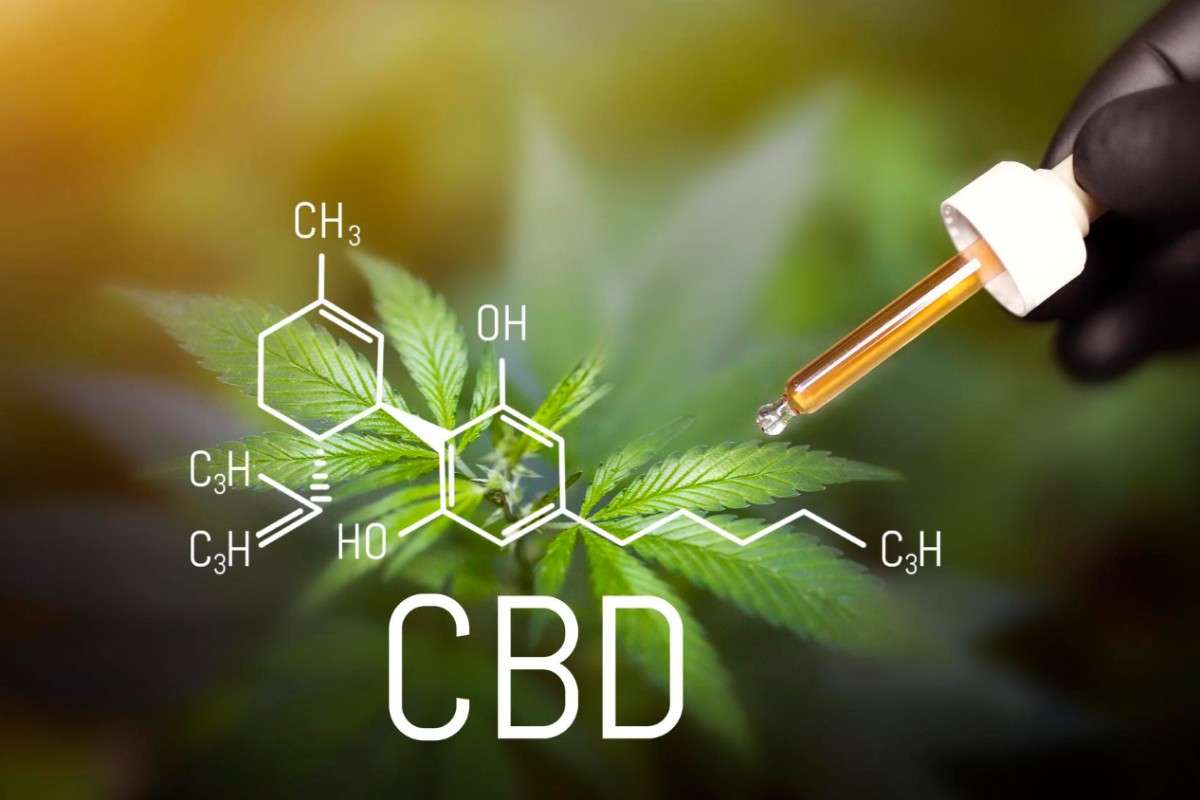The endocannabinoid system is, first and foremost, a fundamental component within the human body. It is a complex physiological apparatus, responsible for many vital functions, from mood changes to pain perception. Each component of this complex biological system works closely with the other parts to try to maintain balance within the body and respond promptly to changes in the external environment.
Discovered in recent times, in the late 1980s and early 1990s, the endocannabinoid system was a turning point in human scientific research. The origins of this incredible discovery have a lot to do with the cannabidiol universe and the effects of CBD on the human body. In this article, we will find out what the relationship between the two is and what the reasons are for the beneficial properties of cannabis cannabidiol.
The revelations inherent to the endocannabinoid system have opened the door to new possibilities: studying this biological apparatus has made it possible to find new answers to try to help patients suffering from very serious diseases. Knowing how certain mechanisms work, which have to do with the central nervous system, is a very important step for the medical world. So, let’s find out what this famous endocannabinoid system is, how it is structured and how it works.
What is the endocannabinoid system
An active ingredient extracted from Cannabis Sativa flowers, cannabidiol has always been used as a natural remedy for a variety of ailments. The impact of this substance on the body has raised some questions: how can a natural compound interact with the human body? What is the reason behind CBD’s effects on humans?
Within the body, there is a physiological apparatus capable of interacting with the main cannabinoids extracted from hemp. The reason for this interaction is the structural similarity between cannabinoids, including CBD, and certain parts of this system. This apparatus has therefore been called the endocannabinoid system and has triggered a series of research that has led to the discovery of hitherto unexplored mechanisms. But how is the system organised and what are its main components?
Imagine the endocannabinoid system as a three-ring chain. The first link consists of the cannabinoids, molecules that act as messengers in that they transmit signals to other cells in the body, causing specific effects. The element in the middle, the one that connects and holds the parts together, is made up of enzymes, proteins that enable communication and the recycling of elements no longer needed. The last link, on the other side of the enzymes, is the cannabinoid receptors.
This chain of elements works in synergy to achieve a common goal: the maintenance of a balanced situation within the body; preserving homeostasis by responding promptly to changes in the external environment is thus the main function of our endocannabinoid system.
How the endocannabinoid system works
Have you ever wondered what mood swings, loss or increase in appetite or more or less intense feelings of pain depend on? Mood, appetite, pain, but also memory and energy are all partly regulated by the action of the endocannabinoid system. Let us now take a closer look at how the system works and how it affects personal well-being.
The centre of the whole system is the cannabinoids. Undisputed protagonists, they can be produced by the body (endogenous) or introduced from outside (exogenous or exocannabinoids). Internally generated cannabinoids are called endocannabinoids. To introduce new cannabinoids from outside, on the other hand, it is necessary to use the active ingredients extracted from the cannabis sativa: the main ones are CBD and THC. The structural similarity between endocannabinoids and hemp cannabinoids allows the latter to interact with the system in turn.
Enzymes are the preferred communication channel between the other two parties. Their function, however, does not end there. They are also responsible for ensuring the complete recycling of endocannabinoids that have completed their cycle.
Through the action of enzymes, the endocannabinoids communicate and bind to their respective cb1 and cb2 receptors: contact between the parts allows the endocannabinoids to release information and influence the vital functions mentioned above. CB1s are found within the central nervous system and in the brain. CB2s, on the other hand, are mainly located within the cells of the immune system. CB1s can influence mechanisms such as sleep or pain perception, CB2s strengthen immune barriers.
Whenever endocannabinoids (or hemp cannabinoids) come into contact with the cb1 and cb2 receptors, they bring enormous benefits to the body: they reduce pain in the event of a serious fracture, speed up muscle recovery after a long workout, or even act as a remedy for even serious illnesses. In other words, they act whenever we find ourselves in an unbalanced situation. We will go into all the other therapeutic properties in more detail shortly.
How CBD acts on the endocannabinoid system
Studies on the endocannabinoid system are interconnected with research into the world of CBD and the potential benefits associated with it. One of the main components of the system is in fact structurally similar to cannabidiol extracted from hemp. This similarity allows cannabidiol to support the process of maintaining homeostasis and stimulate the system to work more effectively.
Going into more detail, it is possible that our body, in particular situations, does not produce enough endocannabinoids. This deficiency of molecules can lead to the development of disorders of different kinds, from a simple but painful migraine to far more serious and dangerous diseases.
Supplementing CBD through edibles, body or skin care products increases the amount of
endocannabinoids and restores order within the system. Once in the bloodstream, CBD does not act as a mechanism on its own, but modulates and regulates mechanisms already in place, seeking to restore balance where needed. This is why starting to incorporate CBD products into one’s routine is a potentially beneficial choice that can lead to enormous physical and psychological benefits.
Types of cannabinoids
We have explored the components of the endocannabinoid system, the mechanisms that determine its effects, and the relationship with cannabis CBD. Let us now define, in more detail, what types of cannabinoids exist. To date, it is possible to divide the cannabinoid macrogroup into three large ‘families’. These include:
- endogenous cannabinoids: anandamines, arachidonoylglycerol, noladin, virodhamine, N-Arachidonoyl dopamine, the endocannabinoids produced directly by our bodies;
- natural cannabinoids: CBD, THC and the other cannabinoids extracted from the female inflorescences of hemp flowers. Subjected to complex processing, they are then integrated into various products that can be purchased;
- synthetic cannabinoids: laboratory-manufactured cannabinoids built to perfectly mimic the structure of those produced by the body. The aim is to use them to support certain treatments by including them as ingredients within certain drugs.
Whether endogenous, derived from cannabis or artificially created, these molecules bind to the respective cb1 and cb2 receptors and trigger positive effects.
The positive effects of CBD on the human body
Unlike its counterpart (THC), CBD is a safe substance with proven therapeutic properties. Legally approved in almost all countries, it has made its way into the world of medicine over the years and is now used as an alternative or in support of some medicines.
But what are the benefits associated with this natural compound?
Among its many positive effects on the body, CBD seems to be particularly effective as a remedy against anxiety, stress and even depression: its relaxing and anxiolytic properties help body and mind to rest and switch off. But that’s not all: CBD’s innumerable beneficial potentials have made it a possible remedy for even serious illnesses, such as obsessive compulsive disorder or post-traumatic stress disorder, but also schizophrenia or bipolar disorder; another important property of CBD is in fact anti-psychotic.
The interaction with the endocannabinoid system and the compatibility between CBD and cb1 receptors – located in the central nervous system – demonstrate the excellent neuroprotective properties and make cannabidiol an important medical support against neuropathic pain.
Another area of application includes all those painful conditions caused by a fracture, injury or severe inflammation. Increasingly, cannabidiol is being used as an alternative to certain medicines as it has incredible analgesic and anti-inflammatory properties. Spreading a good amount of CBD cream on the affected area reduces the perception of pain and provides immediate relief. Athletes and sportsmen and women also choose cannabidiol to recharge after hard training sessions, attracted by its energising and antioxidant properties.
CBD oil at different concentrations
The increase in demand for legal cannabis has triggered the creation of specialised shops offering CBD products for all tastes. Edibles, but also body care and topical products are some of the proposals currently on the market. CBD creams, lotions and oils can be purchased online or in physical shops and are available in different formats.
Maria CBD Oils are found in different concentrations and contain many substances that are beneficial to the body. A carrier oil, omega 3, omega 6, zinc, selenium, magnesium, vitamin B and vitamin E are the main elements found within the compound; each of them is characterised by beneficial properties that all contribute to the positive effects of cannabidiol on the body.
The intensity of the effects depends on the amount of the ingredient in the oil. Maria CBD Oil comprises three types of products containing 5%, 15% and 25% CBD respectively. The first one contains 500 mg of cannabidiol, which is suitable for those who are approaching these products for the first time; the 15% oil contains about 1500 mg of the active ingredient; finally, the 25% oil is the richest cannabidiol alternative, containing 2500 mg.
If you too are thinking of trying the benefits of CBD oil, the advice is to start with a 5% oil and then gradually move on to more potent ones. For all information on CBD oils, discover our products and choose the perfect alternative for you!
 Contact us
Contact us 



